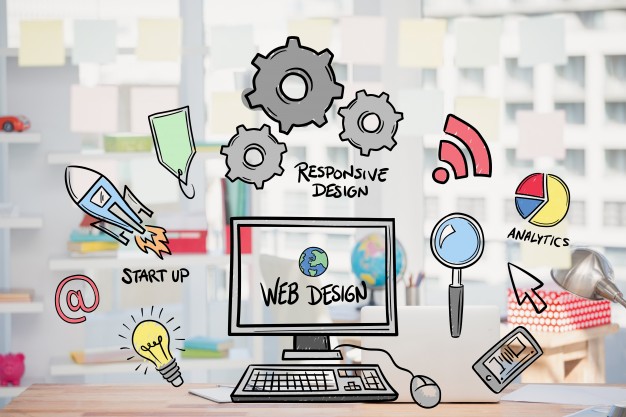Technology is changing faster than ever. What felt exciting just a few months ago can now seem old or outdated. For businesses and designers, this rapid change brings both challenges and opportunities. Interaction design plays a key role in shaping how users engage with websites and apps. It is no longer just about how things look—but also how they respond, behave, and make users feel. Whether you’re a designer, a business owner, or just someone curious about the web, understanding the trends in interaction design can help you create more meaningful and enjoyable digital experiences.

1. Animation and Transitions
Animation is not new, but it has become much more important in web design. Smooth transitions, hover effects, and small visual responses to clicks or touches make a website feel alive. Thanks to modern tools like HTML5, JavaScript, and CSS, designers can now build animations that are lightweight and fluid. You don’t need a full-screen video or heavy visuals to impress. Even a simple fade-in or button bounce can guide users and make their journey easier. For example, when a button glows on hover or a form field shakes gently after an error, it tells the user something without using words. These subtle animations improve both beauty and usability.
2. Interactive Narratives (“Webgraphics”)
Infographics helped users understand complex ideas through visuals. But now, webgraphics go a step further. They let users interact with the content. Instead of scrolling through static data, users can click, swipe, or drag to explore. These interactive stories use HTML5, CSS3, and JQuery to build pages where movement, color, and structure come together to guide the visitor. Whether it’s showing the stages of a product journey or breaking down financial data in animated steps, webgraphics help turn boring content into a fun, learning experience. They also improve time-on-page, keeping users engaged and reducing bounce rate.
3. Micro-Interactions: Small Details, Big Impact
Every time you like a post, receive a ping from an app, or see a typing indicator in chat—those are micro-interactions. They are tiny responses built into digital products that make actions feel real. Good micro-interactions are invisible helpers. They confirm an action, give feedback, or guide the next step. For example: a heart icon beating slightly after you click “like”, a loading bar showing your file is uploading, a quick bounce when you toggle a switch. They may be small, but when done right, micro-interactions build trust and create flow.
4. Real-World Examples and Use Cases
To truly understand the power of interaction design, let’s look at some real websites: Airbnb: Smooth date selection, hover effects on listings, and real-time price updates keep users engaged. Apple: Animations between pages are seamless, adding elegance without distractions. Dropbox: Micro-interactions confirm uploads, show errors clearly, and give quick responses. Stripe: Their onboarding forms show excellent use of transitions, tooltips, and validation animations. These brands understand that good interaction design doesn’t just decorate—it solves problems.
5. Mobile-First Interaction Design
Most users now access websites through mobile devices. That means interaction design must prioritize mobile usability. It’s not just about resizing text or images; it’s about rethinking how users move, tap, and interact with content on smaller screens. Important points for mobile interaction: keep buttons large and tappable, design for thumbs, not cursors, use gestures like swipe, pinch, and scroll, avoid hidden menus that confuse. Also, loading speed is critical. If the page doesn’t respond quickly, users leave. This is why smart animations and clean interfaces matter more on mobile than anywhere else.
6. Accessibility and Inclusive Design
One of the biggest gaps in interaction design is often forgetting users with disabilities. Many visitors may use screen readers, keyboards instead of a mouse, or rely on color cues. Designing interactions that include them ensures that your site works for everyone. Tips to improve accessibility: use proper ARIA labels, ensure high contrast between text and background, test keyboard navigation, avoid motion-only navigation (e.g., swipe without button alternatives). Accessible interaction design isn’t just good ethics—it’s smart business. It increases your reach and meets legal standards.
7. Emotion in Interaction Design
People don’t just use websites—they experience them. Interaction design can influence emotion. Whether it’s delight, comfort, or trust, the way users feel while using your site affects their behavior. For example: a pleasant success sound after placing an order, a “Thank You” animation after subscribing, friendly microcopy (like “Oops! Try again.” instead of “Invalid input.”). These emotional touches turn transactions into relationships. They leave a lasting impression.
8. Future Trends in Interaction Design (2024–2025)
Interaction design continues to evolve. Here are the top emerging trends to keep an eye on:
- Voice Interaction – More users are talking to their devices. From Siri to Alexa, voice-based UIs are growing. Websites are starting to include voice input options, especially in search or support.
- Gesture-Based Navigation – Swipe to delete, pinch to zoom, shake to refresh—these are becoming standard. They work best on mobile and wearable devices.
- Chatbots & Conversational Design – Automated conversations guide users through forms, bookings, or customer support. The focus is now on making these interactions more natural and human-like.
- Scroll-Triggered Animations – Instead of clicking, users scroll. Scroll-based animations tell a story as users move down the page.
- Personalization Using AI – Websites are using behavior data to change content, colors, or layout depending on the user. Interaction feels more tailored, improving satisfaction and sales.
9. Performance vs. Fancy Effects
While animations and effects look good, they can slow down a website. A bloated design can frustrate users, especially those with slower internet or older devices. Tips for balance: use compressed assets and SVGs, avoid unnecessary animation libraries, test loading speed using Google PageSpeed, use lazy loading for images and animations. Remember: speed matters as much as style.
10. Tools That Make It Easier
You don’t need to build everything from scratch. Here are modern tools that help with interaction design: Framer Motion (React animation library), LottieFiles (lightweight animations), GSAP (robust JavaScript animation tool), Figma (prototyping with interactive elements), Webflow (no-code animation builder), Hotjar (track user interactions for testing), Google Lighthouse (performance and accessibility testing). Using the right tools saves time and makes design scalable.
11. User Testing and Feedback Loops
Even the best interaction design means nothing if it doesn’t work for users. That’s why testing is key. Gathering feedback helps identify which interactions confuse users or where they drop off. Easy ways to test: A/B Testing: try two versions of a button or layout. Heatmaps: see where users click most. User Interviews: watch real users use your site and note where they struggle. Interaction design is not one-time work. It’s a continuous cycle of improvement.
12. Why Businesses Should Care
If you’re running a business, here’s why investing in interaction design pays off: Improves Conversions: users complete forms and purchases more easily. Reduces Bounce Rates: better experience means people stay longer. Builds Brand Trust: polished, smooth websites feel reliable. Encourages Loyalty: positive experiences bring users back. Boosts SEO: Google favors sites with low bounce rates and high engagement. In short, good interaction design leads to better user journeys and stronger business results.
Conclusion
Interaction design is more than adding animations or clever effects. It’s about creating a thoughtful, smooth, and enjoyable experience for your users—from their first click to their final action. Trends will keep changing, but the goal remains the same: to connect, engage, and serve users in the best way possible. By combining modern tools, creative thinking, accessibility, and ongoing testing, you can make sure your website doesn’t just look great—but works beautifully too.










